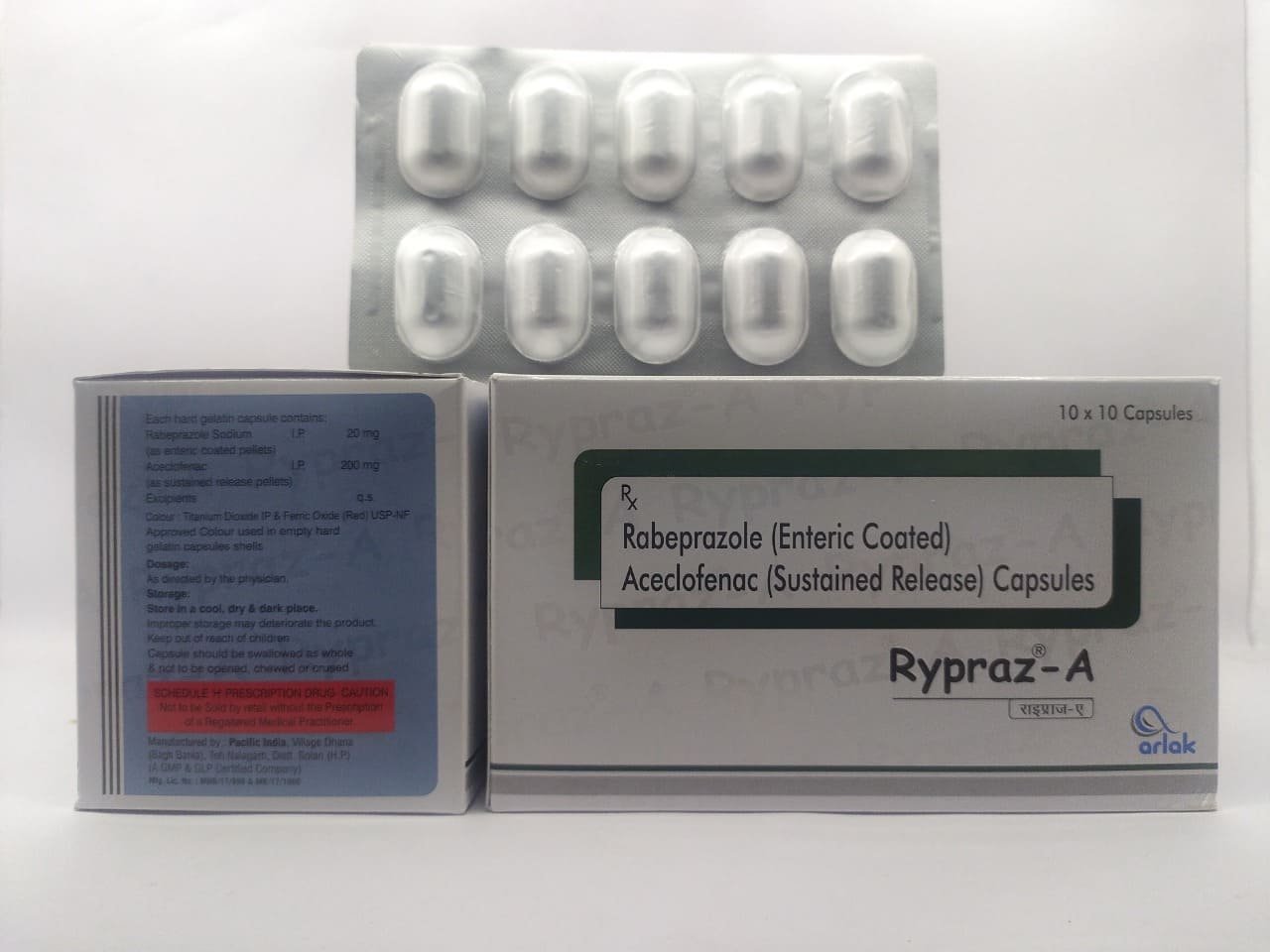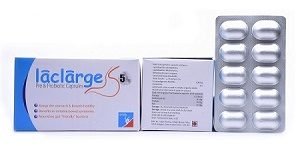Description
Pharmacology
Pharmacodynamics
1.) Rabeprazole: – Rabeprazole belongs to a class of anti secretory compounds (substituted benzimidazole proton-pump inhibitors) that do not exhibit anticholinergic or histamine H2-receptor antagonist properties, but suppress gastric acid secretion by inhibiting the gastric H+/K+ATPase (hydrogen-potassium adenosine triphosphatase) at the secretory surface of the gastric parietal cell. Because this enzyme is regarded as the acid (proton) pump within the parietal cell, rabeprazole has been characterized as a gastric proton-pump inhibitor. Rabeprazole blocks the final step of gastric acid secretion. In gastric parietal cells, rabeprazole is protonated, accumulates, and is transformed to an active sulfenamide. When studied in vitro, rabeprazole is chemically activated at pH 1.2 with a half-life of 78 seconds.
Pharmacokinetics:-
- Rabeprazole: –
- Absorption: Absolute bioavailability is approximately 52%.
- Route of Elimination: Following a single 20 mg oral dose of 14C-labeled rabeprazole, approximately 90% of the drug was eliminated in the urine, primarily as thioether carboxylic acid; its lucuronide, and mercapturic acid metabolites.
Aceclofenac is a non-steroidal anti-inflammatory drug (NSAID) analog of Diclofenac. It is used for the relief of pain and inflammation in rheumatoid arthritis, osteoarthritis and ankylosing spondylitis.
Pharmacology
Pharmacodynamics: – Aceclofenac is a non-steroidal agent with marked anti-inflammatory and analgesic properties. The mode of action of aceclofenac is largely based on the inhibition to prostaglandin synthesis. Aceclofenac is a potent inhibitor of the enzyme cyclo-oxygenase, which is involved in the production of prostaglandins.
Pharmacokinetics: –
- Absorption: – After oral administration, aceclofenac is rapidly and completely absorbed as unchanged drug.
- Distribution: – Peak plasma concentrations are reached approximately 1.25 to 3.00 hours following ingestion. Aceclofenac penetrates into the synovial fluid, where the concentrations reach approximately 57% of those in plasma. The volume of distribution is approximately 25 L.
- Elimination: – The mean plasma elimination half-life is around 4 hours. Aceclofenac is highly protein- bound (>99%). Aceclofenac circulates mainly as unchanged drug. 4′- hydroxyl-aceclofenac is the main metabolite detected in plasma. Approximately two- thirds of the administered dose is excreted via the urine, mainly as hydroxyl-metabolites.
No changes in the pharmacokinetics of aceclofenac have been detected in the elderly.
Indications: –
- This medication is a nonsteroidal anti-inflammatory drug (NSAID), prescribed for fever, pain, ankylosing spondylitis and arthritis.
- It blocks the action of a substance in the body (cyclo-oxygenase), which may cause pain, swelling and inflammation. It blocks the action of a substance in the body (cyclo-oxygenase), which may cause pain, swelling and inflammation.













